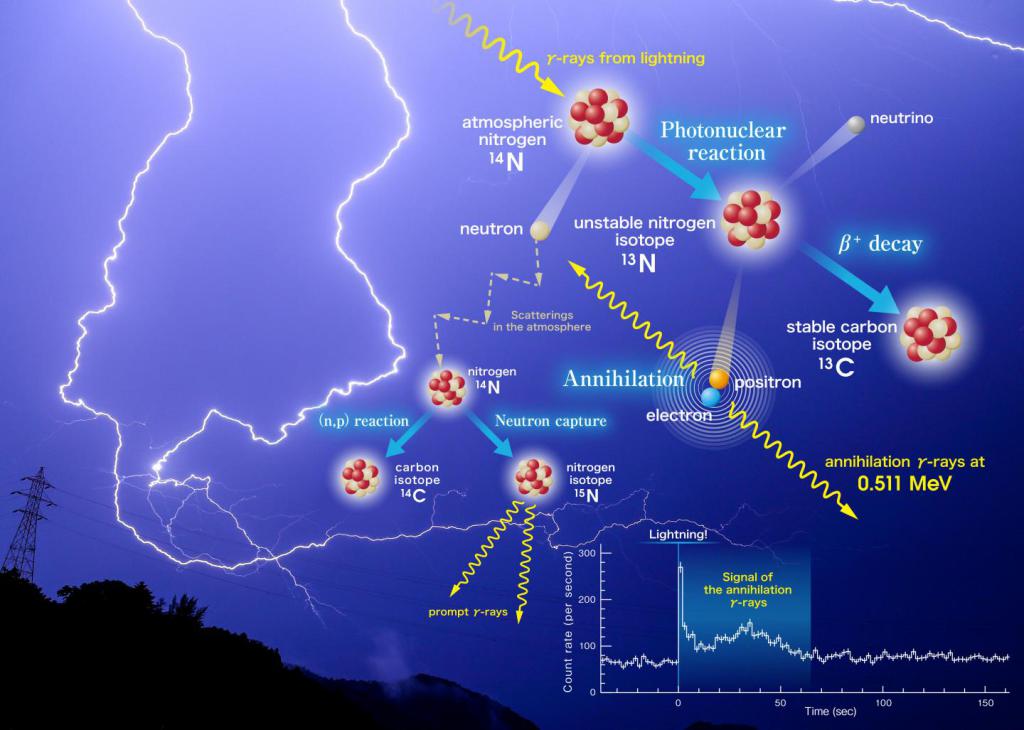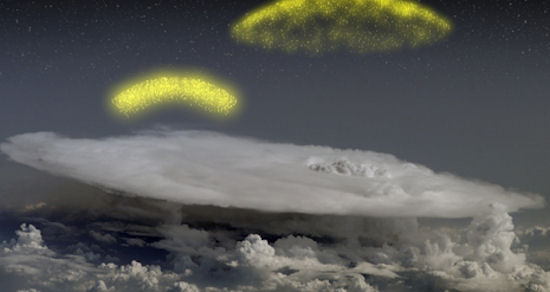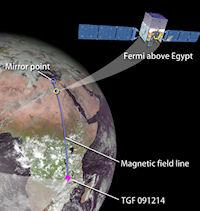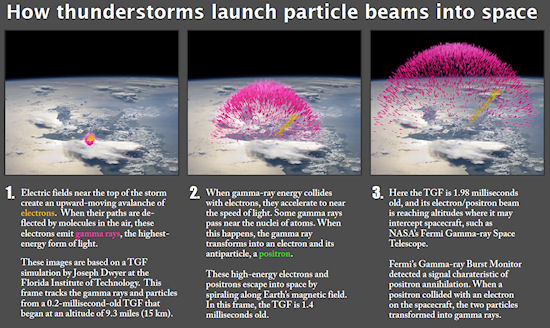Lightning and thunderclouds are natural particle accelerators as reported by Japanese scientists, who detected a γ-ray flash with a duration of less than one millisecond after lightning, during a thunderstorm on 6 February 2017 in Japan. According to their new ground-based observations, the scientists conclude that the centre energy of the prolonged line emission corresponds to electron–positron annihilation, providing conclusive evidence of positrons being produced after the lightning. These signals are the first direct evidence that thunderstorms make antimatter particle beams! Therefore they corroborate previous results made by NASA’s Fermi Gamma-ray Space Telescope, which had also detected beams of antimatter produced above thunderstorms on Earth.

Scientists think the antimatter particles were formed inside thunderstorms in a terrestrial gamma-ray flash (TGF) associated with lightning. It is estimated that about 500 TGFs occur daily worldwide, but most go undetected.

Fermi is designed to monitor gamma rays, the highest energy form of light. When antimatter striking Fermi collides with a particle of normal matter, both particles immediately are annihilated and transformed into gamma rays. The GBM has detected gamma rays with energies of 511,000 electron volts, a signal indicating an electron has met its antimatter counterpart, a positron.
The spacecraft was located immediately above a thunderstorm for most of the observed TGFs, but in four cases, storms were far from Fermi. In addition, lightning-generated radio signals detected by a global monitoring network indicated the only lightning at the time was hundreds or more miles away.
TGF Egypt
During one TGF, which occurred on Dec. 14, 2009, Fermi was located over Egypt. But the active storm was in Zambia, some 2,800 miles to the south. The distant storm was below Fermi’s horizon, so any gamma rays it produced could not have been detected. Even though Fermi couldn’t see the storm, the spacecraft nevertheless was magnetically connected to it. The TGF produced high-speed electrons and positrons, which then rode up Earth’s magnetic field to strike the spacecraft. The beam continued past Fermi, reached a location, known as a mirror point, where its motion was reversed, and then hit the spacecraft a second time just 23 milliseconds later. Each time, positrons in the beam collided with electrons in the spacecraft. The particles annihilated each other, emitting gamma rays detected by Fermi’s GBM.

Scientists long have suspected TGFs arise from the strong electric fields near the tops of thunderstorms. Under the right conditions, they say, the field becomes strong enough that it drives an upward avalanche of electrons. Reaching speeds nearly as fast as light, the high-energy electrons give off gamma rays when they’re deflected by air molecules. Normally, these gamma rays are detected as a TGF.
But the cascading electrons produce so many gamma rays that they blast electrons and positrons clear out of the atmosphere. This happens when the gamma-ray energy transforms into a pair of particles: an electron and a positron. It’s these particles that reach Fermi’s orbit.

The detection of positrons shows many high-energy particles are being ejected from the atmosphere. In fact, scientists now think that all TGFs emit electron/positron beams. The Fermi results put us a step closer to understanding how TGFs work. We still have to figure out what is special about these storms and the precise role lightning plays in the process.
But actually, this is the only place where Antimatter can survive in the Universe:
Antimatter has been considered as a trigger mechanism for nuclear weapons. A major obstacle is the difficulty of producing antimatter in large enough quantities, and there is no evidence that it will ever be feasible. However, the U.S. Air Force funded studies of the physics of antimatter in the Cold War, and began considering its possible use in weapons, not just as a trigger, but as the explosive itself. Well we are right in WEATHER WAR!













[…] post Natural CERN? Lightning storms generate antimatter in Earth’s atmosphere acting like natural p… appeared first on STRANGE SOUNDS – AMAZING, WEIRD AND ODD […]